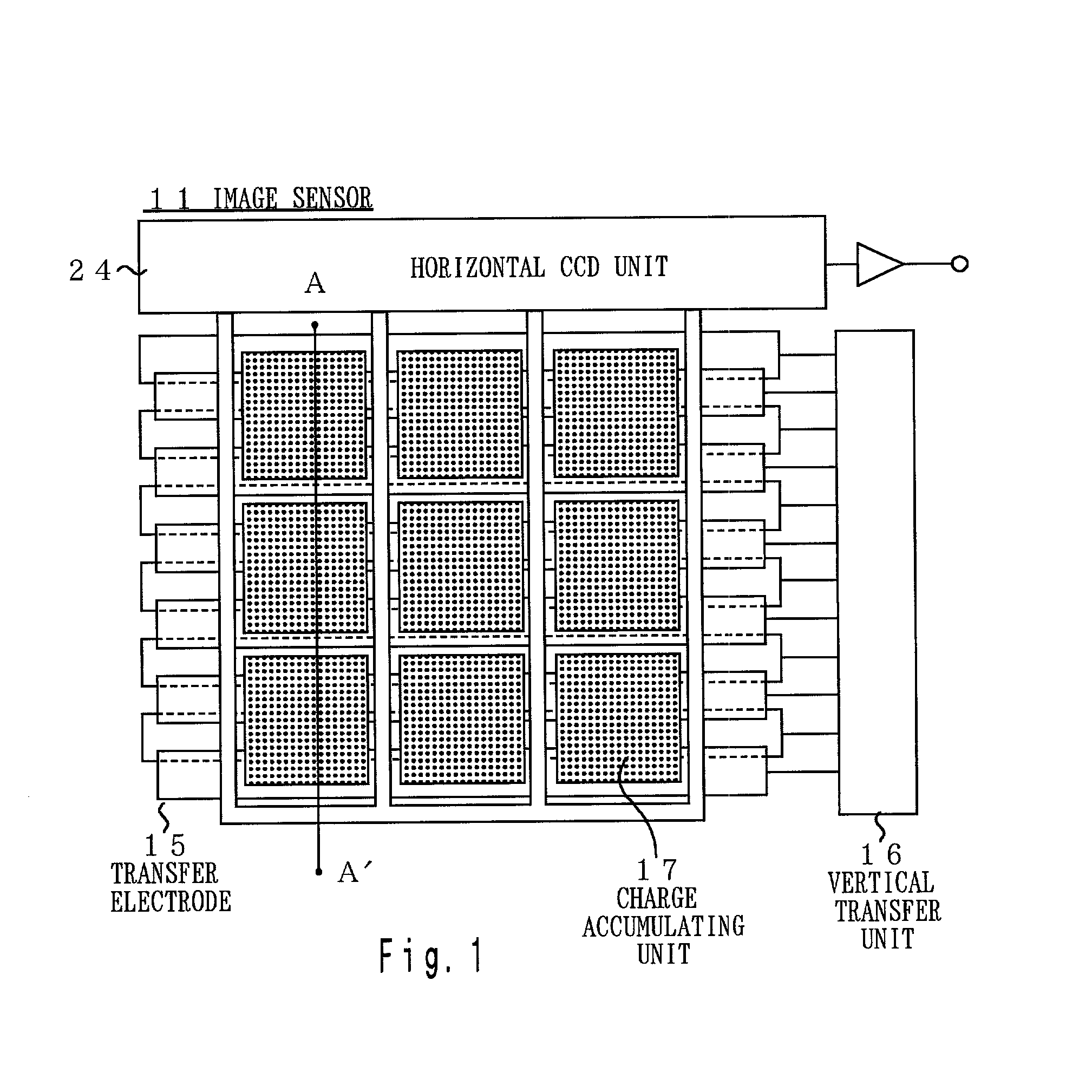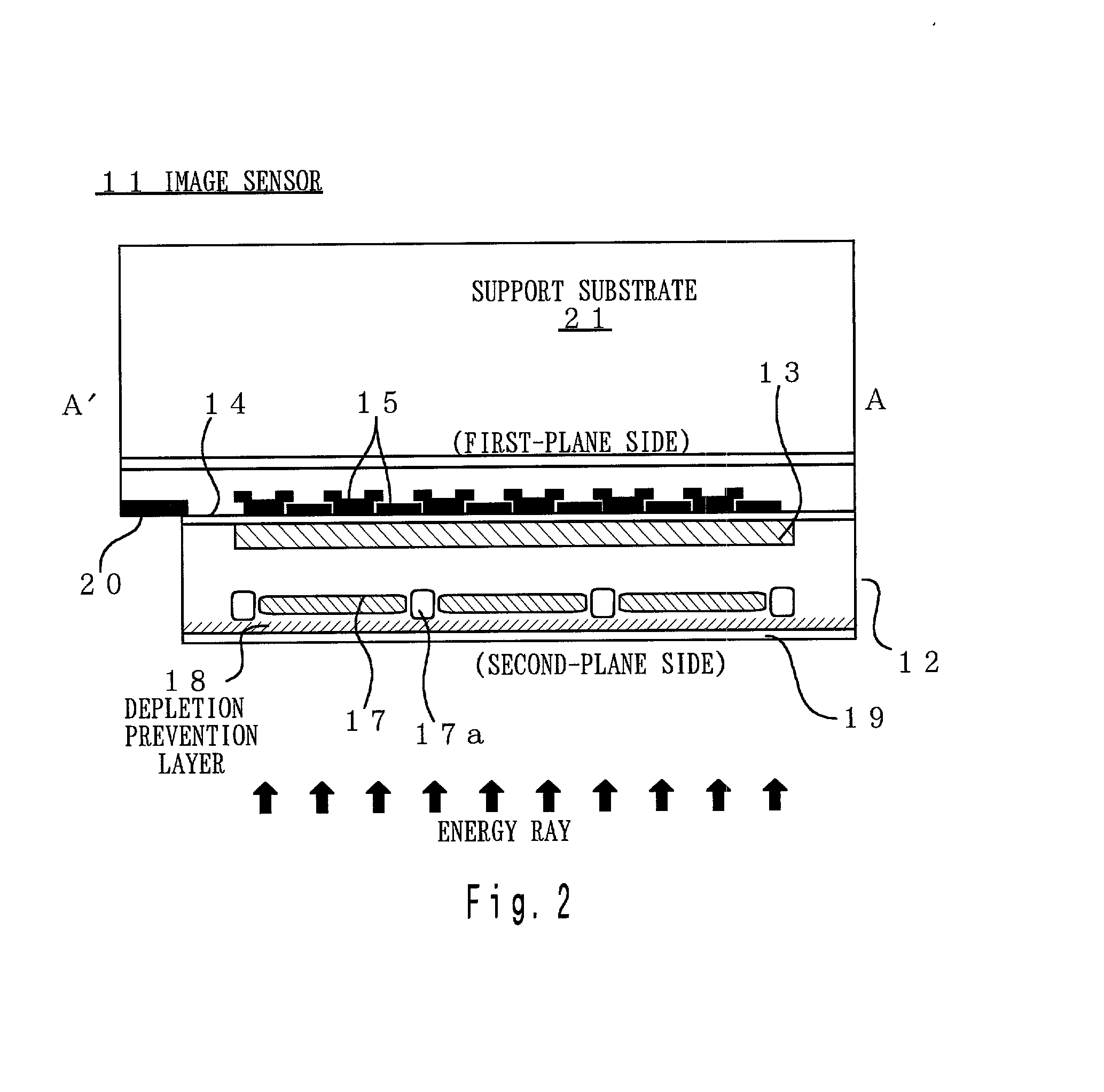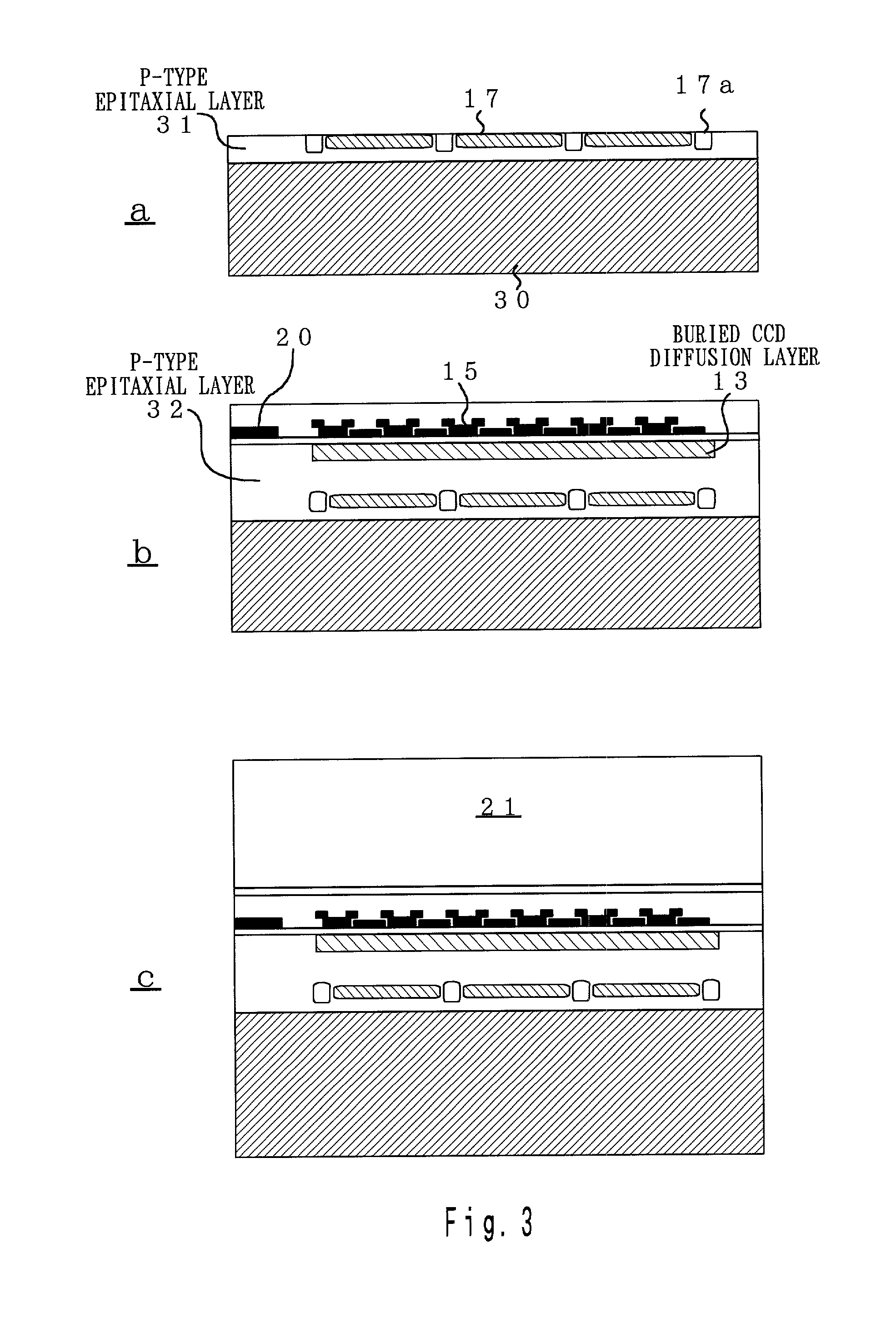Image sensor, method of fabricating the same, and exposure apparatus, measuring device, alignment device, and aberration measuring device using the image sensor
a technology of image sensor and image sensor, which is applied in the field of backilluminated image sensor, can solve the problems of low efficiency of energy ray detection, difficult to improve the resolution of image sensor, and complicating the peripheral mechanism of image sensor
- Summary
- Abstract
- Description
- Claims
- Application Information
AI Technical Summary
Benefits of technology
Problems solved by technology
Method used
Image
Examples
first embodiment
[0210] In the first embodiment described above, the charge accumulating units 17 are arranged on the second-plane side, opposite to the CCD diffusion layers 13. This allows a substantial reduction in the traveling distances of the signal charges on the second-plane side. As a result, it becomes possible to improve the efficiency of energy ray detection and the production of smear. In particular, the above-mentioned improvements become more significant when the traveling distances are longer (when signal charges are generated at very shallow depth in the second plane as under ultraviolet rays).
[0211] Besides, in the first embodiment, the dark current are suppressed greatly owing to a synergistic effect of the depletion prevention layer 18, the discharging of the dark current, the prevented surface depletion of the CCD diffusion layers 13, and so on. Accordingly, it becomes possible to obtain relatively favorable imaging quality even under severe conditions such as weak light detectio...
second embodiment
[0219] The second embodiment corresponds to the inventions set forth in claims 1-10.
[0220] FIG. 11 is a sectional view of an image sensor 51 according to the second embodiment. Note that configurations common to those of the first embodiment (FIG. 2) are shown in FIG. 11 with identical numerals attached thereto. Description thereof will be omitted here.
[0221] A constitutional feature of the image sensor 51 lies in that the semiconductor base 12 is surrounded by an N-type region 52 (corresponding to the semiconductor region described in claim 9) so that the semiconductor base 12 has a well structure. Incidentally, the well structure may be fabricated by forming an N.sup.+-type impurity region in the semiconductor base 12 as an isolation. Otherwise, it may be fabricated by forming a well-shaped P-type semiconductor 12 in part of an N-type semiconductor.
[0222] FIG. 12 is a potential chart for explaining the operation of the second embodiment.
[0223] In the second embodiment, as shown in...
third embodiment
[0228] The third embodiment is of the image sensors corresponding to the inventions set forth in claims 1-4 and 11-18.
[0229] [Configuration of the Image Sensor]
[0230] FIG. 13 is a diagram showing an image sensor 511 according to the third embodiment. FIG. 14 is a diagram showing the sectional structure along the B-B' part shown in FIG. 13. FIG. 15 is a chart showing the net impurity concentration in the A-A' part shown in FIG. 14.
[0231] A constitutional feature of the third embodiment lies in that as shown in FIGS. 13 and 14, a barrier region 519 is arranged between the charge accumulating units 17 and the CCD diffusion layers 13 so as to intercept the charge transporting paths. The barrier region 519 has an impurity concentration distribution of P-type as shown in FIG. 15. The semiconductor base 12 is previously set to be lower than the barrier region 519 in P-type impurity concentration rate.
[0232] Note that components common to those of the first embodiment (FIGS. 1 and 2) are sh...
PUM
 Login to View More
Login to View More Abstract
Description
Claims
Application Information
 Login to View More
Login to View More - R&D
- Intellectual Property
- Life Sciences
- Materials
- Tech Scout
- Unparalleled Data Quality
- Higher Quality Content
- 60% Fewer Hallucinations
Browse by: Latest US Patents, China's latest patents, Technical Efficacy Thesaurus, Application Domain, Technology Topic, Popular Technical Reports.
© 2025 PatSnap. All rights reserved.Legal|Privacy policy|Modern Slavery Act Transparency Statement|Sitemap|About US| Contact US: help@patsnap.com



